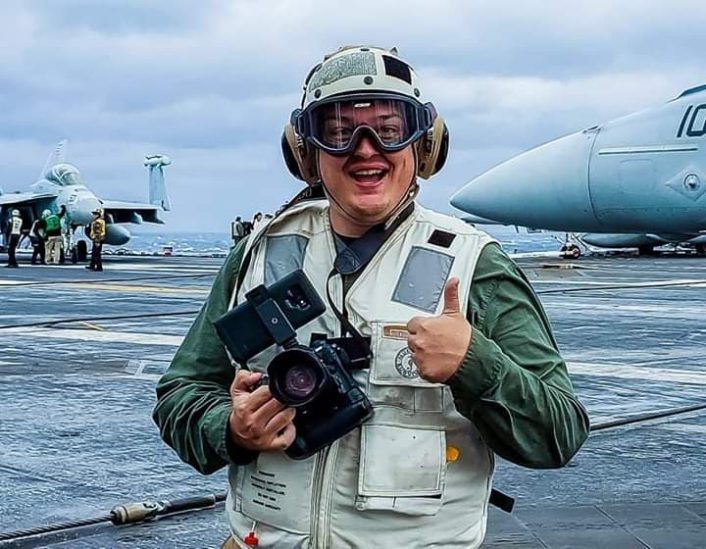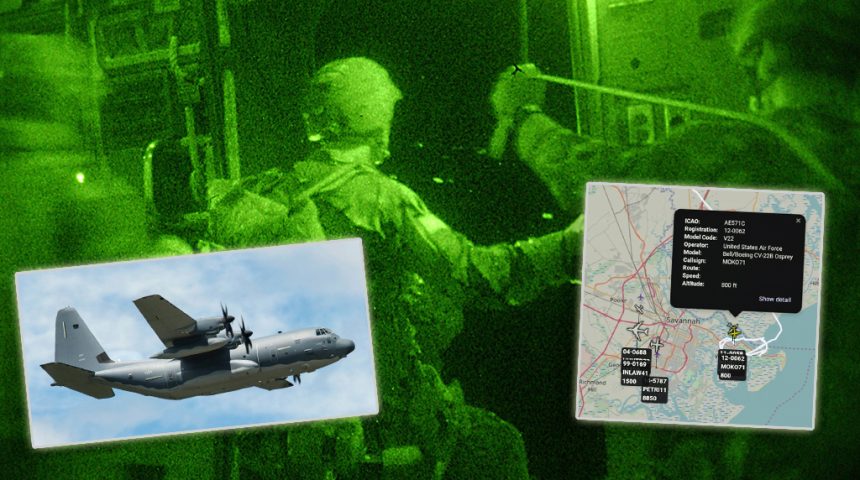Gunships, Surveillance Aircraft and Tactical Transports Crowded Over Hunter AAF Last Night.
Sharp-eyed aviation journalist and photographer Matt Haskell spotted some very interesting activity over Hunter Army Air Field in Savannah, Georgia last night on the GlobalADSBExchange network at around 2300 local East Coast time.
Haskell picked up at least four USAF C-17 airlifters, callsigns “INLAW 37,” “INLAW 39”, “INLAW 40” and “INLAW 41” alternately orbiting and then making passes parallel to the main runway at Hunter AAF at what is a common altitude for dropping parachute troops. When Haskell picked up the activity on the GlobalADSBExchange network, we quickly joined in while he provided us with real-time narrative and analysis of the action as it happened.
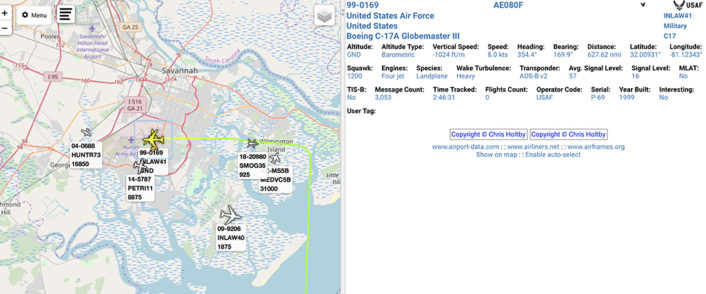
Haskell, who recently covered the arrival of the first British F-35B aircraft aboard the new aircraft carrier HMS Queen Elizabeth, also noted a host of other interesting special operations aircraft crowding into the tight airspace over Hunter AAF.
There were several MC-130 Combat Talons, callsigns “SMOG 31” and “SMOG 34”, An AC-130J gunship, callsign “PETRI 11”, an AWACS aircraft using the callsign “SENTRY 50” and a JSTARS aircraft answering to callsign “KOMODO 2”. Haskell also tracked several KC-135 tankers in the immediate air space during the operation and two interesting Pilatus U-28A ISR (Intelligence, Surveillance and Reconnaissance) aircraft. The Pilatus U-28A belongs to the Air Force Special Operations Command.
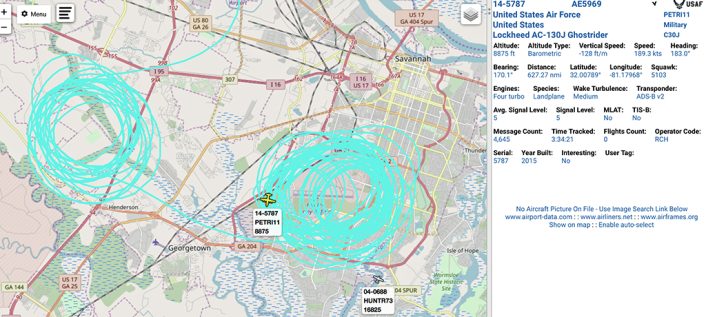
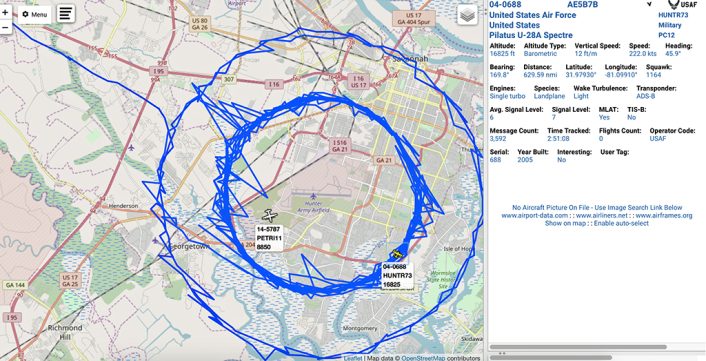
GlobalADSBExchange)
What may have been happening over Hunter AAF last night was an exercise to practice the seizure of an airfield by U.S. Army Rangers. Hunter Army Airfield is home to the Army’s elite 1st Ranger Battalion. This elite light infantry/special operations unit was tasked with airfield seizure during the 1980 Operation Eagle Claw, the failed Iranian hostage rescue mission. The 1st Ranger Battalion, 75th Ranger Regiment was later responsible for the successful airfield seizure of Point Salinas Airport in Grenada during Operation Urgent Fury in October of 1983. The unit was forced to “rig in flight” for a combat parachute jump into the airport when it was the discovered that the runways at Point Salinas Airport had been covered with obstacles to prevent invading aircraft from landing. The Rangers jumped into Point Salinas under anti-aircraft fire from ZSU-34/4 anti-aircraft guns.
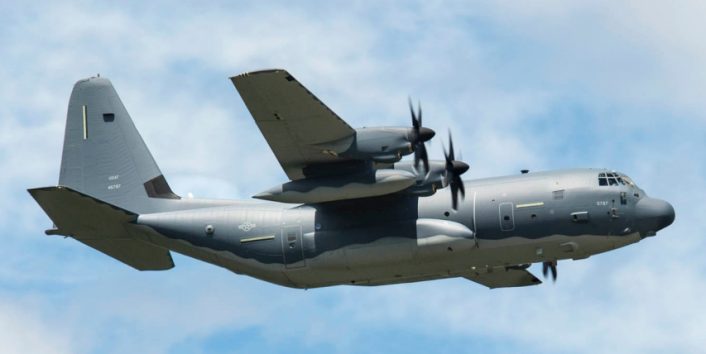
Hunter AAF is also home to the 3rd Battalion, 160th Special Operations Aviation Regiment (160th SOAR), the “Night Stalkers”. It’s likely the Night Stalkers were also active during this training exercise.
The other special operations aircraft seen orbiting at different altitudes over Hunter AAF provided gunship support from the AC-130 Spectre. There was a brief and interesting appearance by a pair of USAF special operations CV-22 Ospreys, callsigns “MOKO 74” and “MOKO 71” who appeared to have (possibly) extracted a special operations team from a nearby roadway, US 321, Deerfield Road. This may have been a reconnaissance/pathfinder team to provide guidance into the drop zone for the large insertion aircraft, the C-17s with the “INLAW” callsigns.
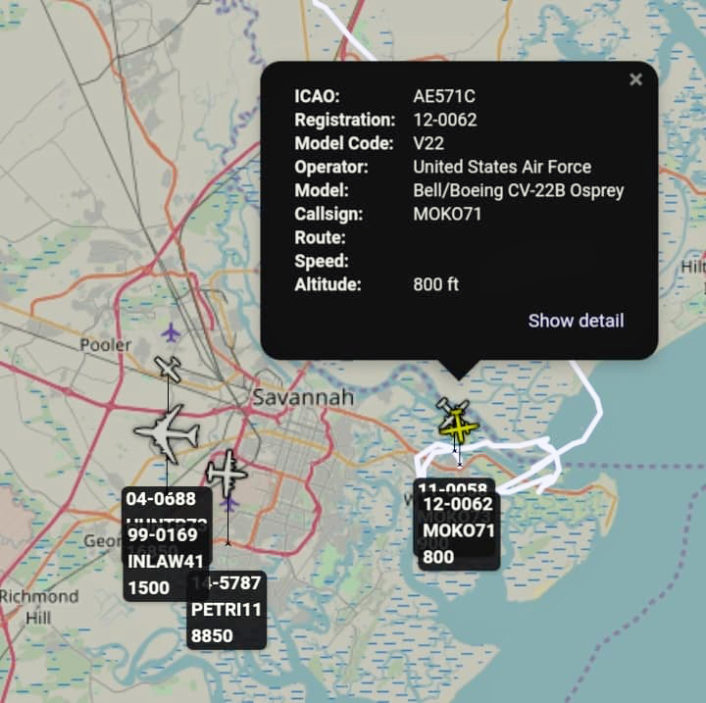
When we checked the relevant NOTAMS or “Notice to Airmen” for the area for last night we found “AFLD CLOSED TO NON-PARTICIPATING ACFT DUE TO PARACHUTE JUMPING ACTIVITY”, or, “Airfield closed to non-participating aircraft due to parachute jumping activity”. This supports the theory of Army Rangers jumping into Hunter AAF for a practice airborne assault.
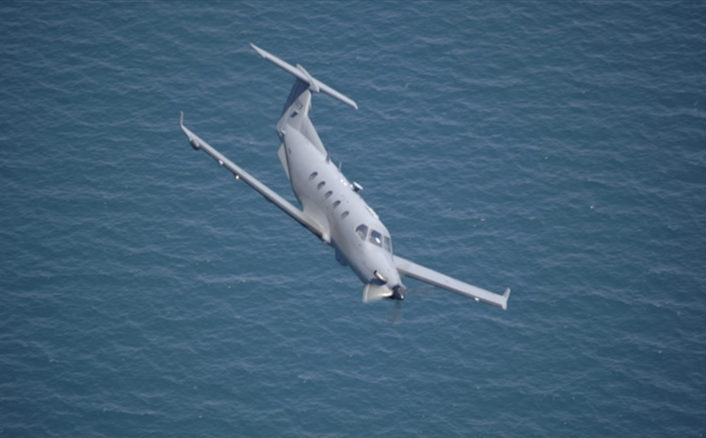
While we can’t be positive of the exact purpose of all the air activity in such a short period of time over Hunter AAF last night, the movement and type of aircraft fit the mission template of an airfield seizure operation, a mission for which the U.S. Special Operations Command is constantly preparing for. Last night’s interesting activity may suggest they are honing their techniques right now.
